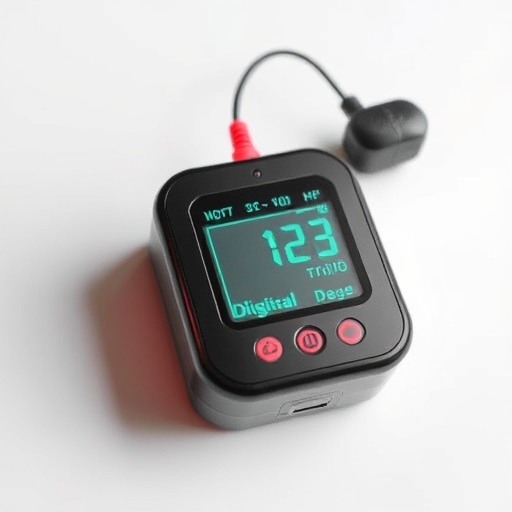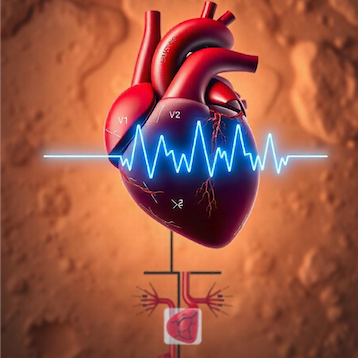Pulmonary artery pressure sensor device performance in patients with atrial fibrillation/flutter

Published: December 30, 2024
Abstract Views: 1360
PDF: 334
APPENDIX: 320
HTML: 1
APPENDIX: 320
HTML: 1
Publisher's note
All claims expressed in this article are solely those of the authors and do not necessarily represent those of their affiliated organizations, or those of the publisher, the editors and the reviewers. Any product that may be evaluated in this article or claim that may be made by its manufacturer is not guaranteed or endorsed by the publisher.
All claims expressed in this article are solely those of the authors and do not necessarily represent those of their affiliated organizations, or those of the publisher, the editors and the reviewers. Any product that may be evaluated in this article or claim that may be made by its manufacturer is not guaranteed or endorsed by the publisher.
Similar Articles
- Rafael Vidal-Pérez, Ewa A. Jankowska, The scientific targets: the myocardium, the vasculature and the body’s response to heart failure , Global Cardiology: Vol. 2 No. 1 (2024)
- Giuseppe M.C. Rosano, Andrew J.S. Coats, Modulation of cardiac metabolism in heart failure , Global Cardiology: Vol. 2 No. 3 (2024)
- Elias Tassoulas, Dimitrios Tasoulas, Christos Papaconstantinou, Ioannis Chlorogiannis, Prognostic factors and outcome in patients submitted into coronary artery bypass surgery with total arterial myocardial revascularization , Global Cardiology: Vol. 2 No. 4 (2024)
- Giuseppe M.C. Rosano, Jerneja Farkas, Evolving targets for heart failure: the journey so far , Global Cardiology: Vol. 1 No. 1 (2023)
- Javed Butler, Sanjiv J. Shah, Melissa Magwire, Carlos Campos, Muhammad Shariq Usman, Anthony Hoovler, Anup Sabharwal, Barry A. Borlaug, Treatment pathways in patients with heart failure with preserved ejection fraction and obesity: perspectives from cardiology specialists and patients , Global Cardiology: Vol. 2 No. 2 (2024)
- Ralph Stephan von Bardeleben, Muhammad Shahzeb Khan, Martin Geyer, Tim Friede, Javed Butler, Monika Diek, Jutta Heinrich, Marius Placzek, Roberto Ferrari, William T. Abraham, Ottavio Alfieri, Angelo Auricchio, Antoni Bayes-Genis, John G.F. Cleland, Gerasimos Filippatos, Finn Gustafsson, Wilhelm Haverkamp, Malte Kelm, Karl-Heinz Kuck, Ulf Landmesser, Aldo P. Maggioni, Marco Metra, Vlasis Ninios, Mark C. Petrie, Tienush Rassaf, Frank Ruschitzka, Ulrich Schäfer, P. Christian Schulze, Konstantinos Spargias, Alec Vahanian, Jose Luis Zamorano, Andreas Zeiher, Mahir Karakas, Friedrich Koehler, Mitja Lainscak, Alper Öner, Nikolaos Mezilis, Efstratios K. Theofilogiannakos, Ilias Ninios, Michael Chrissoheris, Panagiota Kourkoveli, Konstantinos Papadopoulos, Grzegorz Smolka, Wojciech Wojakowski, Krzysztof Reczuch, Fausto J. Pinto, Łukasz Wiewiórka, Zbigniew Kalarus, Marianna Adamo, Evelyn Santiago-Vacas, Tobias Friedrich Ruf, Michael Gross, Joern Tongers, Gerd Hasenfuß, Wolfgang Schillinger, Piotr Ponikowski, Stefan D. Anker, Baseline echocardiographic characteristics of patients enrolled in the randomized investigation of MitraClip device in heart failure (RESHAPE HF-2) trial: comparison with COAPT and Mitra-FR , Global Cardiology: Vol. 2 No. 2 (2024)
- Adeseye A. Akintunde, Sope T. Orugun, The association of iron deficiency with right ventricular dysfunction in Africans with heart failure , Global Cardiology: Vol. 2 No. 4 (2024)
- Giuseppe M.C. Rosano, Clinical trial design, endpoints and regulatory considerations in heart failure , Global Cardiology: Vol. 2 No. 1 (2024)
- Stephan von Haehling, Wolfram Doehner, Ruben Evertz, Tania Garfias-Veitl, Monika Diek, Mahir Karakas, Ralf Birkemeyer, Gerasimos Fillippatos, Piotr Ponikowski, Michael Böhm, Tim Friede, Stefan D. Anker, Iron deficiency in heart failure with preserved ejection fraction: rationale and design of the FAIR-HFpEF trial , Global Cardiology: Vol. 1 No. 1 (2023)
- Camila Bedo, Juan C. Grignola, Preferential vasodilator effects of levosimendan in resistance pulmonary arteries in a rodent pulmonary embolism model , Global Cardiology: Vol. 2 No. 1 (2024)
You may also start an advanced similarity search for this article.

 https://doi.org/10.4081/cardio.2024.55
https://doi.org/10.4081/cardio.2024.55
















